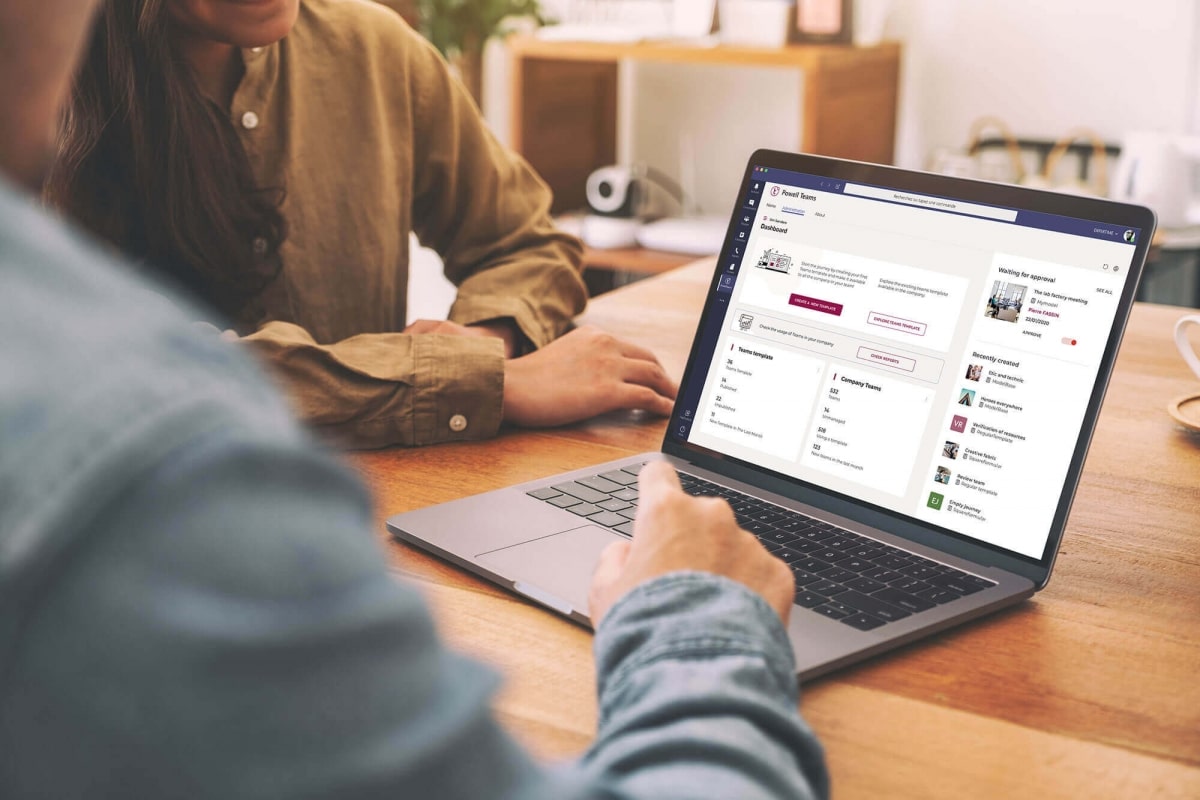What are the different types of permissions available in Microsoft Teams?
Microsoft Teams has created a hierarchical structure of permissions that allows you to control access across the platform.
There are three primary permission levels: Owner, Member, and Guest. Each of these permission levels has its own set of capabilities and restrictions. Understanding what each offers – and how to grant, revoke or modify permissions levels – is essential to managing a secure and efficient Microsoft Teams environment.
Let’s break down each level and consider when and why to use them within your organization.
Owner Permissions
Owner permissions in Microsoft Teams are a hierarchical system of access control that allows users to manage who has access to certain features on the platform. These permissions provide organizational security and protect confidential information, allowing for efficient team collaboration.
Owners have the highest permission level within Microsoft Teams and can do several tasks, such as adding and removing members, deleting the team, and managing the settings.
They can also manage the channels within a team, including creating new channels, renaming them, and setting permissions for who can access each channel. Additionally, they may be able to customize options within a team or communicate with other members of their organization outside of the platform.
Who should be considered for owner permissions in your organization? Here are a few of the potentials or roles to consider:

- IT professionals responsible for the organization’s security and compliance.
- HR personnel responsible for managing employee access and permissions.
- Business decision-makers who need to ensure team members can collaborate securely and effectively.
- Executives who may need an overview of team activity or want to control access to certain areas of the platform.
- Sales personnel who must manage customer information and collaborate with internal teams.
- Engineers or developers working on projects requiring data sharing and collaboration.
- Customer service representatives who may be managing customer support requests or handling customer inquiries.
In general, owner permissions should be kept to the bare minimum needed to perform a particular role or task. This allows teams and organizations to have full control over who can access data and content and ensures that everyone is following the same security policies.
How to assign owner permissions?
Microsoft Teams provides a way to assign owner permissions to team members. Here is a step-by-step guide on how to set owner permissions in Microsoft Teams:

- Open the Teams admin center and expand the “Teams” tab.
- Select the team name under the display name column.
- In the Members tab, you can assign roles such as Owner or Member to each user.
- To remove someone, select X to remove them from the team.
- To change someone’s role, select the dropdown arrow and choose a role such as Owner or Member for that person.
- To add someone, click Add member and enter their email address or name in the search box that appears.
- You can also manage team settings and permissions in Teams by going to Manage Team > Settings > Permissions tab, where you can set guest permissions for channels in Teams as well as shared channel owner and member roles in Teams.
- Lastly, if you need to assign a new owner to an orphaned group, sign in to the Microsoft 365 portal with an account that has administrator privileges and go to Groups from the navigation pane at the left side of the app. Next, choose Groups from the dropdown menu, followed by selecting the Assign Owner option from the right side of the page. This will allow you to assign a new owner for the orphaned group.
Member Permissions
While “owner” permissions allow for greater control over a team, “member” permissions are typically limited to sending messages, uploading files, and accessing shared resources. Member permission levels can be adjusted from within each channel in the Teams tenant and can be set for individual users or for groups.
What are member permissions, and what do they allow?
Members can have different levels of access to resources within a team. Depending on the permission level assigned, members can send messages, view and edit files, create and delete channels, delete messages, etc.
Additionally, members can manage access to files and folders in a team by selecting Manage Access > Advanced from the right side after selecting an item. This will allow them to set access rules for individual members or groups.
For example, members can be given the ability to view but not edit a file, or they can be allowed full control of editing and deleting the item.
By granting different levels of permissions, teams can keep their data secure while still allowing appropriate individuals access.
Additionally, team members can be made aware of the rules by including a notice in the message describing the access level of each item. This will help ensure that everyone is on the same page and that no one is going beyond what they can do.
How to assign member permissions
Similar to setting owner permissions, you can set access levels for individual members or groups of people. To do so:
Here’s how to do it:
- Log into the Teams Admin Center and expand the ‘Teams’ section.
- Select ‘Manage Teams’ from the menu.
- Select the team name under the display name column.
- In the Members tab, you can view all members of your team and their roles within it.
- To assign a new team member, click ‘Add Member’ and enter their email address or name into the search bar.
- Once you have added them to your team, select their role from the drop-down menu – either Owner or Member – depending on what level of access you want them to have within your team space.
- Click ‘Save Changes’ when you are done assigning roles and permissions for each team member.
- You can also set guest permissions for channels in Teams by selecting ‘More Options’ > ‘Settings’ > ‘Manage Team’ > ‘Guest Permissions’ from the left side of the app window, then selecting which type of permission guests should have (e.g., read or write).
- Finally, if you want to restrict users from creating new teams and Microsoft 365 groups, you can delegate group creation and management rights to a set of users by going to ‘Settings’ > ‘Groups Settings’ > ‘Group Creation Settings’ in the Teams Admin Center dashboard and selecting which users should be allowed to create groups/teams within your organization’s space in Microsoft Teams.
Guest Permissions
The third type of permission available in Teams is guest permission.
Guests are people in the organization who have been invited by team members but do not have access to all of the same features as regular members. Having guest access can be beneficial for external collaborators, such as freelancers or contractors, who are working on a project with your team members.
What are guest permissions, and what do they allow?
Guest permissions in Microsoft Teams are given to those not part of the regular organization but are invited by team members. These permissions allow guests to interact with team members, view files, participate in conversations and join meetings.
They can also create their own teams and channels within the organization’s space if they are allowed those privileges. Guests are typically given restricted access – they can’t manage teams or modify the organization’s settings, and their files may be subject to extra security measures.
Granting guest access has several benefits for organizations that involve external collaborators and partners: it allows organizations to share information and collaborate securely with external parties without giving them full access to the company’s network. It also helps with compliance and audits since administrators can control who can access which data and teams.
In addition, granting guest permissions is an excellent way of onboarding new members quickly and easily – you can add them to the workspace, and they can get started immediately. Finally, it provides enhanced security since administrators can control who can access which data. With guest permissions, organizations can ensure that only approved individuals can access sensitive information.
How to assign guest permissions?
Administrators can assign guest permissions to a specific individual or group using a similar method as assigning user access. In general, the process involves the following steps:
- Select Teams on the left side of the app.
- Go to the team name, and select More options > Manage team > Settings > Guest permissions.
- Under Guest permissions, select Allow guests to create, update, and delete channels if you want guests to be able to create new channels or delete existing ones.
- Under Channel-specific settings, select a channel and choose which permissions you want guests to have in that channel (e.g., read messages, post messages).
- When you’re done making changes, click Save at the top of the page.
Once these steps are completed, guests will have the appropriate permissions for each channel in your team’s workspace. It’s important to note that guests can only access teams and channels they’ve been invited to; they won’t be able to view any other teams or channels without an invitation from a team owner or member with permission.
How to manage permissions for multiple users?
For many teams, it’s important to be able to grant specific privileges and access rights to multiple users. If you need to manage permissions for more than one user at once, Teams makes it easy to do so.
To manage permissions for multiple users in Microsoft Teams, team owners should first sign in to the Teams admin center and access Teams apps > Permission policies. They can select the policy by clicking on the left of the policy name and then assign roles and permissions accordingly. They should also ensure that file permissions reflect whatever their admin has set in place.
In addition, team owners should request device permissions for their Microsoft Teams app by selecting their profile icon in the upper right corner of the window and selecting Settings > Permissions from the drop-down menu. This will allow them to use certain features such as audio/video calls or screen sharing with other users.
Finally, team owners should be aware of any required permissions for bots or messaging extensions when using third-party apps within Microsoft Teams. This will help ensure that all users have access to appropriate content while still maintaining security protocols.
Best Practices for Managing Microsoft Teams Permissions
When using Microsoft Teams, team owners should understand the importance of properly managing permissions. Not only will you want to ensure that all users can access the features that they need, but you’ll also want to make sure that they’re not given too much access. This can be achieved by following some key best practices:
Tips for maximizing productivity and security
- Establish a clear permission policy for Microsoft Teams. This should include guidelines on who can create and manage teams, how often user access should be reviewed, and what type of content is appropriate for each team.
- Define roles and responsibilities for team owners and members. Team owners should understand their responsibility to manage permissions, while members should know what they can contribute to the team.
- Utilize built-in security features such as two-factor authentication and encryption. This will help to ensure that only authorized users can access team data and features.
- Regularly review user permissions in your Microsoft Teams environment. Ensure users only have access to the resources they need, and remove any unnecessary permissions or group memberships regularly.
Common Challenges with Microsoft Teams Permissions
Some challenges arise when it comes to assigning permissions in Microsoft Teams. From figuring out who to give access to, to understanding the different levels of access available, some complexities need to be addressed:
What are the common challenges organizations face with Microsoft Teams permissions?
- Figuring out who should and shouldn’t have access to the platform.
- Understanding which permission levels are appropriate for different organizational roles.
- Determining how and when to apply changes in permissions to ensure security and compliance standards are met.
- Keep up with updates or new features that might impact existing permissions.
- Addressing potential conflicts that could arise from changes in permissions or access levels.
Best practices to avoid these challenges
To ensure the security and compliance of your organization, there are some best practices to follow when it comes to Microsoft Teams permissions.

- Create a policy that defines the rules for access control – who should have what level of access and why.
- Designate one or more team members as responsible for managing and periodically auditing user permissions in Microsoft Teams.
- Establish processes for regularly reviewing user permissions and granting access to those who need it while still adhering to established policies and procedures.
- Utilize the audit logs provided by Microsoft Teams to monitor when changes are made and track any suspicious activity or unauthorized changes in permission levels.
- Make sure everyone has been trained on how to use Microsoft Teams securely and is aware.
By taking the right steps to ensure secure access management for Microsoft Teams, organizations can protect their data and ensure that only authorized users have the level of access they need. This will help prevent unauthorized access, reduce data leakage, and improve the organization’s overall security posture.
With proper planning and enforcement of security measures, organizations can rest assured knowing their valuable company assets are safe from potential threats.
Conclusion
Permission management for Microsoft Teams is important to any organization’s security strategy. By taking the time to implement proper access controls, organizations can protect their data from unauthorized access and ensure that only authorized users have the level of access they need.
Doing so will help organizations stay updated with industry best practices and protect their company assets from potential threats. With the right access controls in place, organizations can enjoy the benefits of Microsoft Teams while keeping their data safe.
The task of ensuring that policies are correctly applied can be a daunting and time-consuming task for IT administrators. Without proper governance and reporting automation solutions, there is always the risk that policies may not be correctly implemented, leading to potential security and compliance issues. This is where Powell Governance comes in – as a comprehensive solution for governance and reporting automation, it simplifies the process of verifying policy application, giving IT admins peace of mind while saving them valuable time and resources. With Powell Governance, organizations can ensure that their policies are always properly applied, making it a crucial tool for maintaining a secure and compliant IT environment.





